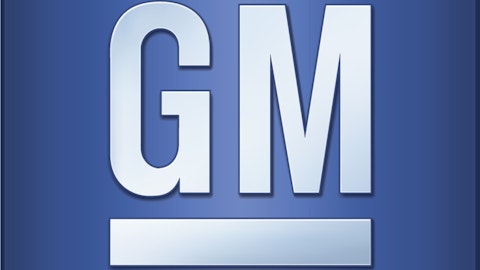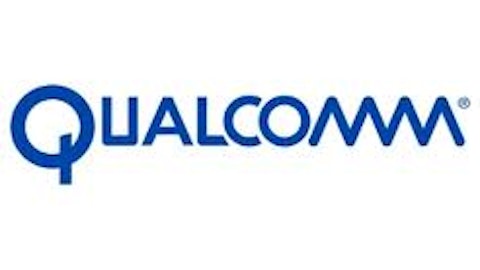In my portfolio, I hold a small position in a small biotech company by the name of Sangamo Biosciences, Inc. (NASDAQ:SGMO). The company has burned cash for most of its corporate life, only has small sales to a select group of customers, and has lost $0.41 per share over the last twelve months with even more losses before that. If you compare Sangamo to a company like Pfizer Inc. (NYSE:PFE), Sangamo looks like a money pit of an investment.
Pfizer pays a 3.5% dividend, Sangamo pays nothing. Pfizer Inc. (NYSE:PFE) has positive earnings and trades for a P/E ratio of less than 20, (NASDAQ:SGMO) has continued to lose money. This list could go on and on, but most investors would realize that this comparison is irrelevant to both companies. Despite both being in the biotech industry, (NASDAQ:SGMO) is a high risk start-up while Pfizer is an established, dividend paying, big pharma style corporation. There is a clear lesson to be drawn here that just because two companies are in the same industry does not make them reasonable companies to compare on an investment basis.
Searching for a comparison
As investors, we love to be able to compare our potential investments to other investments, whether for P/E ratios, growth rates, market cap, or dividend yield. In fact, it’s very natural for humans to want to pick out patterns and act upon them to our advantage. However, sometimes this pattern picking and comparison can lead us to make faulty comparisons as shown in the Sangamo-Pfizer comparison.
This is probably one of the easiest comparisons to deem irrelevant since all investors know, or should know, the fundamental differences between speculative biotech and dividend paying big pharma. But, there is another comparison that follows much of the same pattern as the Sangamo-Pfizer comparison, but this comparison is continually being made.
Silicon Valley is known as a home to technology of the information age. While frequently equated with the latest in computing technology, Silicon Valley is also home to one of the most interesting car companies of our time. Start-up automaker Tesla Motors Inc (NASDAQ:TSLA) has made it a mission to mass produce the electric car and bring it to everyday people.
What started out as an operation that put li-ion batteries in Lotus Elise bodies to create the Tesla Roadster has become a company valued at more than $10 billion as of this writing. Yet, Tesla Motors Inc (NASDAQ:TSLA) still has a long way to go. Its target of 21,000 Model S’ is a substantial increase over last year’s production, but is still dwarfed by the likes of major automakers. Clearly, Tesla Motors Inc (NASDAQ:TSLA) is aiming for strong growth over the next several years, having already built a prototype of its Model X SUV and is discussing its Gen III sedan to be produced in the hundreds of thousands of units.
When investors are looking for a Tesla Motors Inc (NASDAQ:TSLA) comparison, the first place they tend to look is to the automotive industry where Tesla intends to make its money. The fundamental problem with this approach is that the automotive industry is made up of large established players that dwarf Tesla’s production capabilities and are dwarfed by Tesla in growth potential. Comparing Tesla Motors Inc (NASDAQ:TSLA) to two frequent automotive comparisons results in the table below.
| Automaker | P/E ratio | EPS | Market Cap | Dividend |
| Tesla Motors | N/A | ($2.84) | $10.9B | No dividend |
| Tesla Motors Inc (NASDAQ:TSLA) | 10.7 | $1.48 | $62.3B | 2.55% |
| General Motors Company (NYSE:GM) | 11.8 | $2.90 | $47.0B | No dividend |
Looking at this table without appropriate context would make Tesla look like a disaster of a company. But, Tesla is aiming to increase its production capacity by at least ten times over the next several years as it introduces new models and grows a larger customer base. But a ten fold increase in production capacity at GM or Ford is not in the works, and certainly not within the next decade.
Both GM and Ford have solid earnings, an established automotive presence, and a large production capacity. These industry characteristics, combined with Ford’s payment of a dividend, set these two automakers up as the Pfizer in the Sangamo-Pfizer comparison. By contrast, Tesla’s growth potential, small market cap, and lack of industry wide presence earn it the position of Sangamo in this biotech comparison.
Same industry, different companies
High growth and established players are seen across most industries. Companies like Tesla and Sangamo occupy a high growth, higher risk spot, where earnings are currently small but could multiply many times over if the core product(s) are successful. A widespread adoption of Tesla’s electric vehicles or Sangamo’s gene therapy techniques could turn the companies into multi-bagger investments. Conversely, a failure of acceptance for either posses a strong financial risk to both companies.
On the established side, GM, Ford, and Pfizer all have the opportunity to grow, but the potential for growth is not the same as with smaller players. GM and Ford would benefit from a rebound in auto sales connected to an improving economy and emerging markets growth, while Pfizer could benefit from new innovations developed through in-house research or through acquisitions of small biotech companies that possess their own innovations. In the end, any of the companies mentioned in this article could prove to be worthwhile investments but comparing them with each other is largely irrelevant due to the fundamental differences between them.
Alexander MacLennan owns shares of Tesla Motors and Sangamo Biosciences. The Motley Fool recommends Ford, General Motors, and Tesla Motors . The Motley Fool owns shares of Ford and Tesla Motors.
The article The Never Ending Comparison originally appeared on Fool.com.
Copyright © 1995 – 2013 The Motley Fool, LLC. All rights reserved. The Motley Fool has a disclosure policy.






